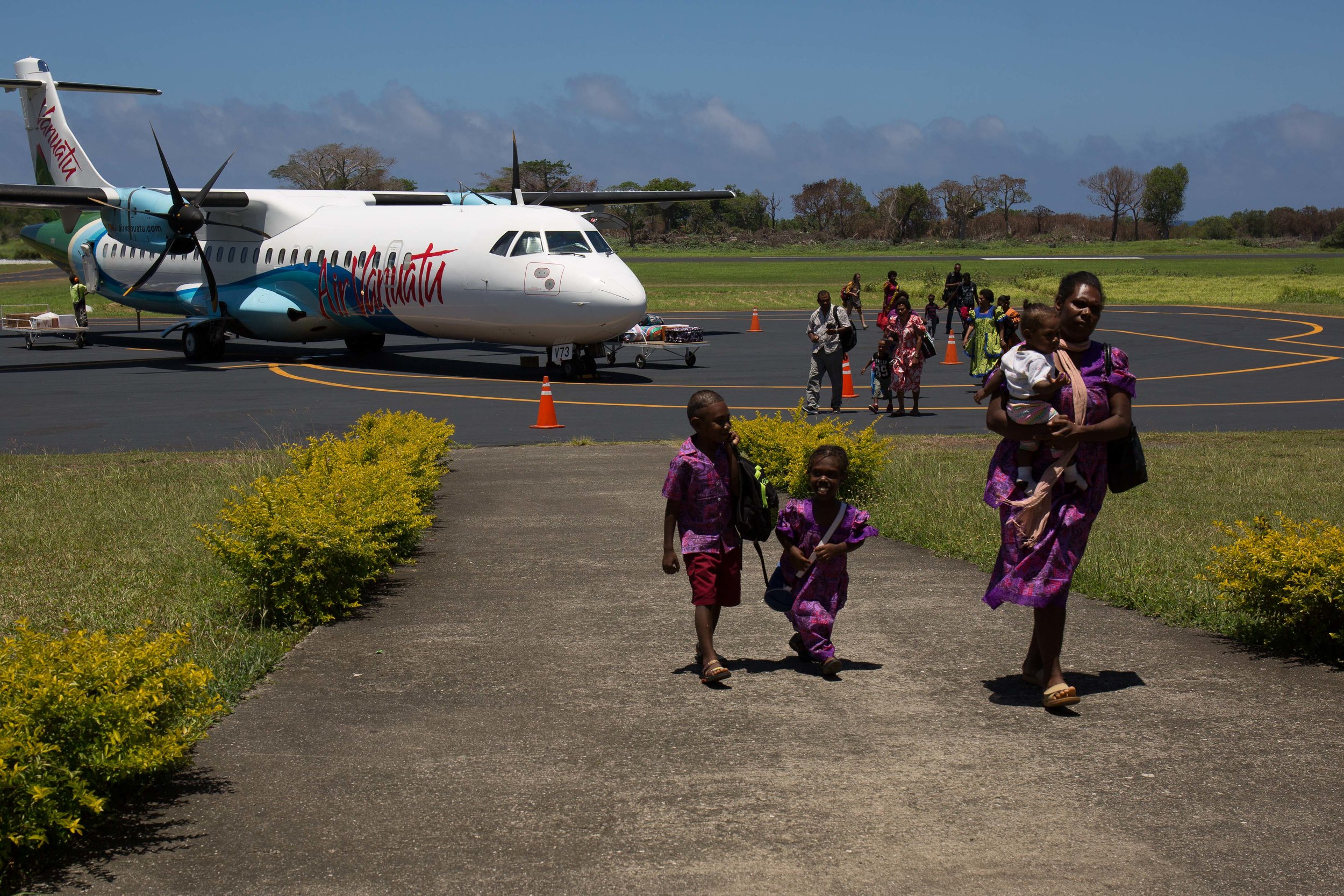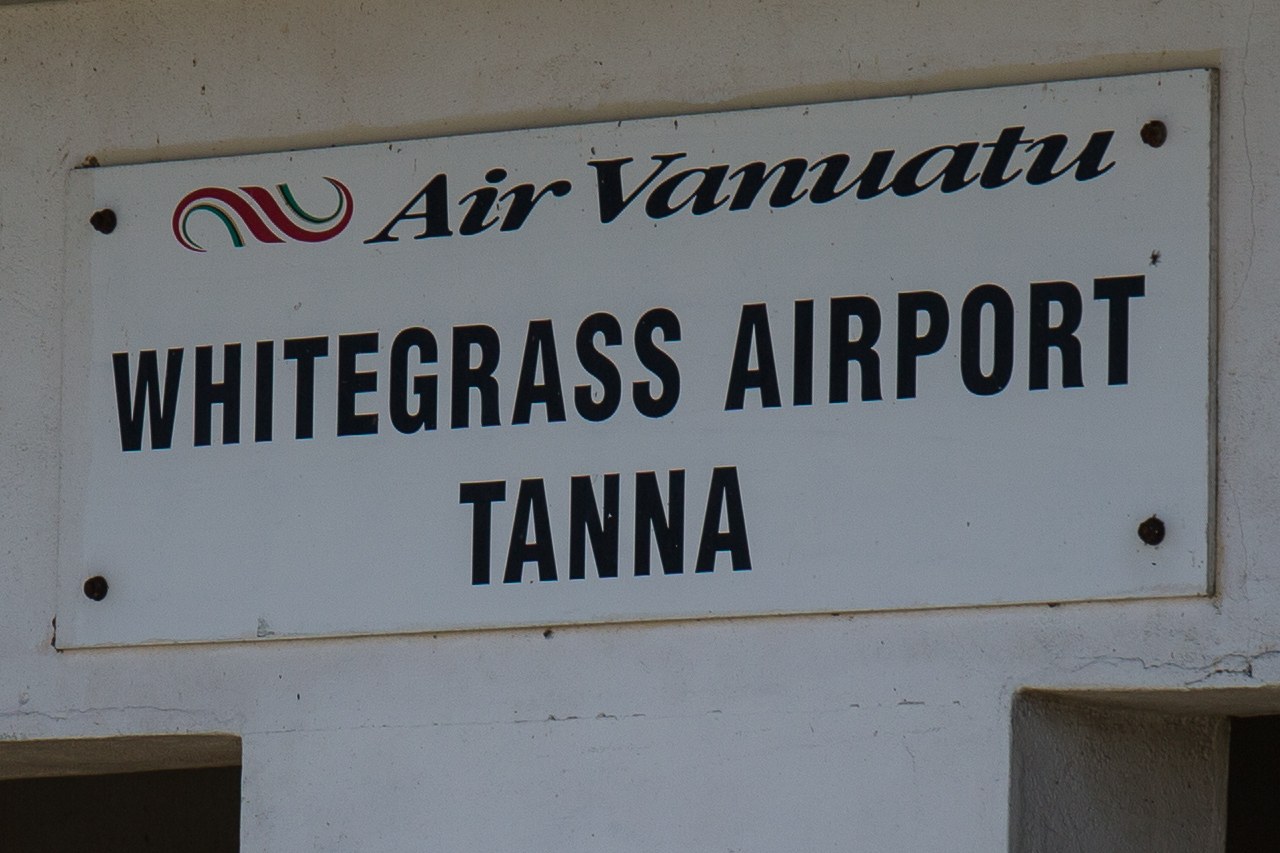Mt Yasur Volcano, Vanuatu - How to Get There
Mount Yasur is billed as one of the world’s most accessible active volcanos – and there is no doubt that this is absolutely true. The country of Vanuatu is just 3-4 hours flight from Australia’s east coast – with flights once daily from Sydney and four times a week from Brisbane, to the capital Port Vila. There are also flights from Auckland, Fiji, New Caledonia and the Solomon Islands.
From Port Vila (on the island of Efate), a 40 minute flight brings you to the island of Tanna, the home of Mount Yasur.
Once in Tanna, you can be driven all the way to the sloping side of the volcano, where an easy 10 minute walk takes you right to the edge of the caldera, and the rumbling and roiling of the volcano within.
But while with many attractions, accessible may equate with underwhelming, at Mt Yasur Volcano, this could not be further from the truth! This phenomenal natural wonder is both accessible and active – not a few times a day, or even a few times an hour, but almost continuously, grumbling and simmering away incessantly, culminating every few minutes (yes, just minutes) in violent explosions that shoot boulders and glowing red magma high into the air. Having visited multiple other active volcanoes around the world, the experience at Mount Yasur is by far and away the most impressive we have ever seen - in terms of frequency of activity, and just how close you are to the action. It is a thrilling experience, worthy of the hype and high expectations. So here’s how to make it happen.
When planning your Vanuatu itinerary to include Mount Yasur (and we really recommend that you do), the first step is to get to the island of Tanna. In the Vanuatu capital of Port Vila, on the island of Efate, several tour operators offer day-trips to Mount Yasur, including flights to Tanna and a whistle-stop tour to the volcano. But these only provide daylight visits to the volcano, and miss the volcano in its nocturnal splendour. It is also possible to arrange a one night tour package, and while this is a big improvement on the daytrip, it involves a somewhat frenetic itinerary.
Instead, we would highly recommend giving Mount Yasur Volcano the time and attention it deserves, by staying several nights on Tanna. This allows maximum flexibility for visiting the volcano, which is often affected by inclement weather and the vagaries of volcano behaviour - meaning that if the volcano is clouded over on your first day, you still have another chance of going the next day. And when you are not visiting the volcano, Tanna has a number of other fantastic activities to enjoy - such as idyllic snorkelling, impressive underwater caves and traditional tribal villages to visit, all of which can be arranged once in Tanna.
There are direct flights from Port Vila to Tanna once or twice daily with Air Vanuatu, and it is recommended to sit on the left side of the plane for the best views of the volcano when arriving.
When staying on Tanna, the accommodation options are divided between those in the foothills of the volcano on the eastern side of the island, and those on the west coast. The eastern lodgings are simple rustic affairs with basic facilities, but with a great location near the entrance to the volcano. The more upmarket accommodation is all located on the west coast, near the airport – here we can highly recommend the newest and most luxurious lodge, Rockwater Resort. Other options include the nearby Tanna Evergreen Resort and Whitegrass Ocean Resort & Spa. The downside of staying in the west is obviously the distance from the volcano – a journey of 60-90 minutes each way, and the volcano is not visible from the west coast (but an upside of the distance is that there is less ash in the air and on everything).
Once on Tanna, book your visit to the volcano. We would recommend visiting the volcano at the first available opportunity (on the day you arrive if possible). Don’t wait, as the volcano can be clouded over or in an ash haze for days at a time, and if you leave it to the last minute you might miss out. And, if you are like us, you might be tempted to go more than once (it really is that impressive). At this point in time, it does not appear to be necessary to book your visit to the volcano before arriving in Tanna.
Booking your visit to the volcano is easy, as all hotels arrange transport to the volcano. Please be aware that this transport is likely to be in a 4WD dual cab vehicle, which may have sufficient seats for all guests inside the vehicle, or may have some guests inside and some guests outside in the rear tray. Being seated in the back is somewhat of an adventure - windy, ashy and bouncy!
Once arriving at the entrance to the volcano, you join up with the guided group tours that depart several times daily. The sunset tour, which commences at 1630, is justifiably the most popular. Tours commence with a welcome ceremony, requesting the blessing of the local village chief for the visit to the volcano. Guests then pile into the back of several utes for the ten minute drive up the side of the volcano. At the top of the trail, a (very) short safety briefing occurs, and then several guides lead groups for the short walk to the summit to explore the crater rim. Once at the summit, very little further guiding or explanation occurs - and guests are free to find the best vantage points along the stretch of crater rim that is accessible (about a quarter of the circumference). Approximately one hour is spent on the caldera, with the normal end of the tour occurring just after sunset.
While this tour is a fantastic way to see and experience the power of the volcano, it ends while the sky is still quite light, meaning the volcano is still well lit, and those fiery explosions are not yet at their photographic finest. For those of you interested in capturing images like these, we would strongly encourage you to make inquiries about staying longer at the volcano at the end of the tour.
For us, it was an extra 7000-9000 vatu, approximately A$90-$110 (the price fluctuated each day!), to have a guide stay with us on the crater edge for an extra hour after the rest of the crowd were ushered away. On both occasions it was a magical hour alone on the caldera as darkness became complete, with the world lit only by the red glow emanating from the earth, and the pyrotechnic display at its fiery finest. Booking this extra time on the volcano is not a “standard” request and is not straightforward, often requiring several phone calls from our resort to confirm, but is absolutely worth the effort and expense if you can swing it.
So, what do you need to take for your visit to Mt Yasur volcano? For enthusiastic photographers, we are writing some detailed posts with our photography tips and tricks to ensure you get the most from shooting this spectacle (see below). But in summary we recommend you have a tripod for long exposure photography, a good camera cover to protect your camera from the ever-present ash, and lenses protected by UV filters (better to ruin a filter than your lens).
Aside from camera gear, you will need appropriate clothing – long pants and sleeves are recommended, as protection from both the sun and the ash, which at times can be icicle-sharp. When it is particularly misty on the volcano, a rain jacket is suggested, and on occasion it can get chilly at the top (we had an extra layer with us in our backpacks on our visits, but they were not required).
Closed walking shoes are essential, as the ground is rough and rocky, and you need to be stable if you are to perch safely on the narrow ridge.
We would also highly recommend a balaclava, to stop your ears and hair from becoming full of ash, and to cover your mouth and nose from the intermittent bursts of pungent sulphurous fumes. Sunglasses are needed during the day (preferably ones with as much wraparound coverage as possible), but as the night descends, a great idea is to swap sunglasses for clear plastic safety glasses – while not a great look, your grit-free eyes will thank you.
And finally a head-torch – helpful for camera and tripod adjustments in the dark (even if you know your camera really well) and essential for the precarious descent if you are staying long past sunset.
For more details see our detailed post regarding preparing for your visit below.
Mount Yasur was definitely the highlight of our visit to Vanuatu – an incredible opportunity to experience the raw power of mother nature, with a proximity that is seemingly unmatched anywhere in the world.
Learn More
Photographing Mount Yasur Volcano: Part 1 – Timing, Shooting Locations & Other Tips (Still to come)
Photographing Mount Yasur Volcano: Part 2 – Camera Gear & Other Equipment
Photographing Mount Yasur Volcano: Part 3 – Image Types & Camera Settings (Still to come)







